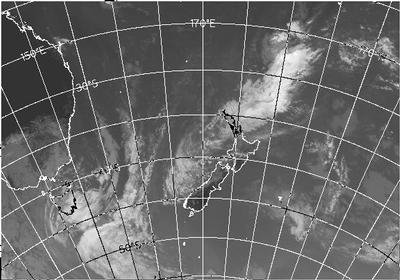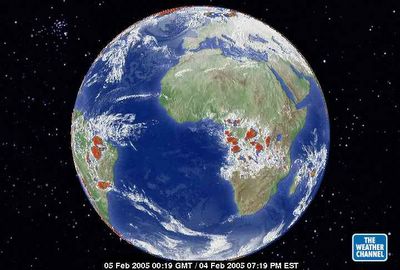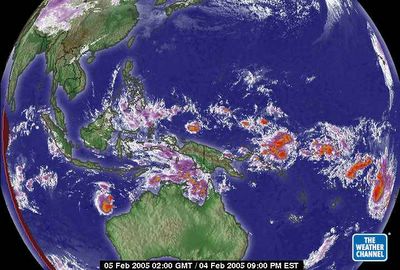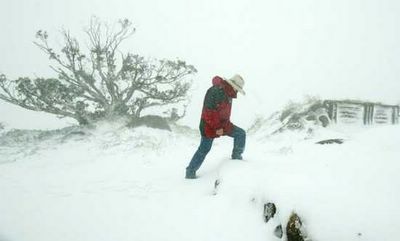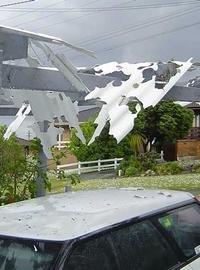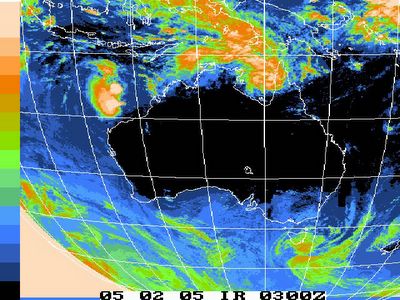
Latest satellite image. According to Austrlian weather service it is warmer at the poles than over northern border of Australia. Degrees
Celsius Colour
-68 Very pale orange (off-white)
-61 Pale orange
-55 Orange
-47 BRIGHT BRICK-RED
-40 Dull reddish-green
-33 Dull green (red tinge)
-27 Dull green (slightly reddish)
-20 BRIGHT LIGHT GREEN
-12 Medium green (bluish)
-6 Dark Green (blue/green)
+1 Light Blue +8 Medium Blue
+15 Dark Blue
+22 Dark grey/blue
>22 Black

IDW20100
BUREAU OF METEOROLOGY WESTERN AUSTRALIA REGIONAL OFFICEPRIORITY
STRONG WIND WARNINGfor coastal waters between Bremer Bay and EuclaIssued at 11:20 am WST on Saturday, 5 February 2005
Please be aware, wind gusts can be a further 40 percent stronger than theaverages given here, and maximum waves may be up to twice the height.
Situation: A deep heat trough near Hopetoun is expected to move eastwards alongthe south coast during today, reaching Israelite Bay overnight.
Expected strongwinds ahead of and immediately behind the trough.
Bremer Bay to Israelite Bay: NE/N'ly winds 20/30 knots, ahead of a SW'ly 20/30 knots change extending from the west during the day.
Expect SW winds tomoderate below 25 knots overnight.
Seas to 2.0m. Swell to 2.0m.
Israelite Bay to Eucla: SE/NE winds strengthening to 20/30 knots this afternoon.
Expect winds to moderate below 25 knots overnight as winds tend NE to northerly.
Seas to 2m. Swell to 2.0m.

